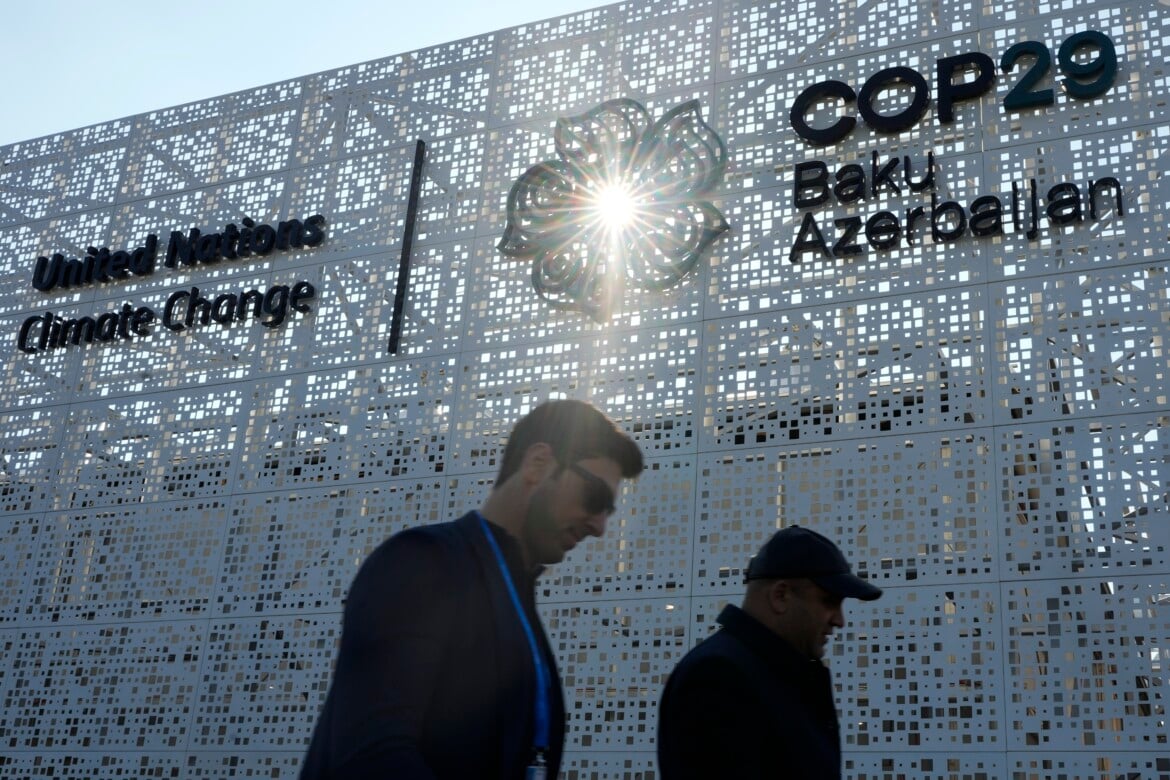Analysis
COP29 opens under the gavel of an oil man with no expectation for a breakthrough
This time, the issue being focused on is money. The United Nations has estimated the real needs of developing countries for the next five years at between $5 trillion and $7 trillion.

In the conference hall right next to Baku's Olympic Stadium, UAE Industry Minister Sultan Al Jaber handed over the gavel to his Azerbaijani colleague Mukhtar Babayev, marking the start of COP29, the annual Conference of the Parties on climate change.
Like a year ago in Dubai, the summit will be led by an oil industry man: Azerbaijani Environment Minister Babayev was an executive at Socar, Azerbaijan's state oil company, for 25 years. Nearly half of the former Soviet republic's GDP depends on oil and gas production.
Monday was marked by ceremonial events, accreditation procedures and hotel check-in for participants. This year, the organizers distributed about 70,000 passes. The schedule includes meetings until Nov. 22, and the highlight is expected in the second half of the summit, when the final document with the task list for governments is usually discussed. In recent years, in order to close with an agreement – even a very modest one – the conference has needed extra time.
Perhaps because of how it went last year, or perhaps because of Donald Trump, no one at the COP that kicked off among the oil wells of the Caucasus had great expectations.
The truth is that these summits rarely generate momentous breakthroughs, regardless of where they’re held. Raise your hand if you can remember concrete measures implemented as a result of an agreement signed at the COP. This is influenced by the architecture of the conference itself: each year, governments, NGOs and invited companies (more and more of them every time) address only one specific aspect of the broader issue of climate change mitigation and adaptation. To the uninitiated, even the most forward-thinking agreement can seem limited in the face of the complexity of the problem.
This time, the issue being focused on is money. Countries will have to update the targets set in Copenhagen in 2009, when the most industrialized ones pledged to put together $100 billion (about €94 billion) a year to finance emissions abatement and climate change adaptation actions in developing countries. The target was not reached until 2022. In the meantime, it had already been agreed to revive and deepen the commitment by 2025, and Baku is the last chance to do so.
The goal set in 2009 now looks like a fig leaf. The United Nations has estimated the real needs of developing countries for the next five years at between $5 trillion and $7 trillion. These figures, if taken seriously, would embarrass Minister Giorgetti and the others like him from all over the world, who will haggle about everything at the COP. Some think a trillion a year is too much, some think it’s too little. There are those who would like to expand the number of contributing countries beyond North America, Japan, Western Europe and Australia, also involving China and India. Developing countries are also demanding compensation for the increasingly frequent natural disasters caused by climate change.
First and foremost, the debate is focusing on whether we are talking about public funding alone or whether private investment can also be included in the numbers. Developed countries have “diverging understandings on what should count as climate finance and on how to count it,” and reporting requirements negotiated at the UN “allow countries to remain vague,” said Prof. Romain Weikmans, climate researcher at the Free University of Brussels, to Carbon Brief, one of the media outlets worth keeping an eye on to follow the COP.
If private investment is included in the climate investment figure, there is the question of where the fight against global warming ends and where greenwashing begins. A substantial portion of the current hundred billion has served more to clean up the reputations of energy-intensive companies than to diminish climate risk. The massive presence in Baku of lobbyists from big fossil fuel companies alongside governments does not bode well.
On Monday, at the Chamber of Deputies in Rome, the campaign “Clean the COP! – Get the big polluters out of the Climate COP” launched by the Italian NGOs A Sud, Openpolis and Economiacircolare.com was presented, with many endorsements from across the environmental world. This initiative counted up the Italian lobbyists taking part in the COP: according to its findings, at the Dubai COP there were “40 accredited officials from the government against a total of 47 Italian fossil fuel lobbyists present,” recalled Lucie Greyl of A Sud. “The two organizations with the highest number of accredited delegates from Italy were SAIPEM (16 accreditations) and ENI (14), whose lines of business, tied to the increasing spread of fossil fuels, go in the opposite direction of the COP's objectives and what should be the objectives of the Italian government.”
The campaign has circulated an appeal for the upcoming COP30 in Belem, Brazil to “take away lobbyists’ badges,” signed by around 30 academics including Luca Mercalli, Mario Tozzi, Vincenzo Balzani and Nicola Armaroli.
Originally published at https://ilmanifesto.it/al-via-senza-illusioni-tra-i-pozzi-di-petrolio-del-caucaso-la-cop29 on 2024-11-12
